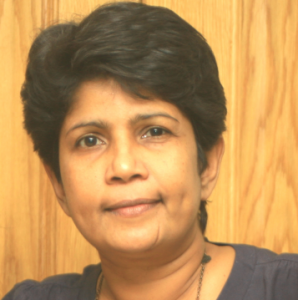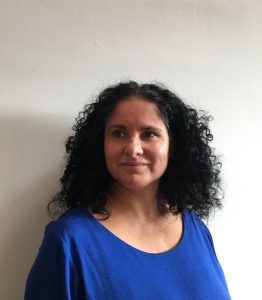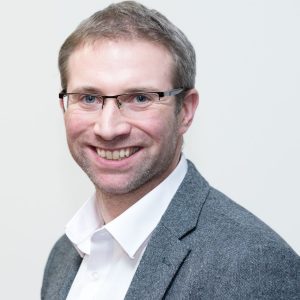 Dr Niroshini Nirmalan (School of Environment & Life Sciences)
Dr Niroshini Nirmalan (School of Environment & Life Sciences)
Following her postdoctoral training at UMIST, MIB (University of Manchester) and CRUK (University of Leeds), Niroshini joined Salford as a Senior Lecturer in April 2010. Her landmark publications include the first annotated 2D proteomic maps for the malarial parasite P. falciparum, and the development of novel quantitative proteomic methodologies to investigate the malarial proteome and formalin-fixed tissue archives. Since joining us, she has developed two strong internationally recognised research themes, firstly in malaria drug discovery and secondly in research into biomarkers in major trauma. She has established a Class 3 pathogen facility at the University, to enable continuous malaria cultures. Her research group works on various aspects of drug discovery including repositioning, natural product leads, nano-drug delivery systems, etc.
Niroshini has also established a collaborative network between the University, NHS (Manchester Royal Infirmary and Salford Royal) and Waters Corporation to initiate a 200-patient study to define biomarkers of poor clinical outcome in major trauma. The study was awarded NIHR Portfolio status for four years (2015-2019), enabling ring-fenced NIHR funding to employ dedicated research nurse teams. The ongoing study has recruited nearly 100 patients so far, and has established a high fidelity human serum biobank for trauma patient samples here at Salford. Niroshini has concurrently led the School’s flagship Biomedical Science Programme (2011-2015), overseeing the implementation of changes that achieved upper quartile ratings in all key NSS parameters, including an overall student satisfaction score of 100%. She is currently the curriculum lead for the University’s pioneering joint venture with MMU to establish a new medical school in Greater Manchester (GMMedS).
Dr Federica Sotgia (School of Environment & Life Sciences)
 Federica has an outstanding track record of sustained academic excellence at the national and international level. As a young researcher, she was the first to discover a new form of limb-girdle muscular dystrophy (LGMD-1C) due to mutations in the human Caveolin-3 gene. These findings were published in Nature Genetics. Later on, she shifted her research interest from muscular disorders to cancer, but always maintained her keen focus on mitochondria and cell metabolism, throughout her career.
Federica has an outstanding track record of sustained academic excellence at the national and international level. As a young researcher, she was the first to discover a new form of limb-girdle muscular dystrophy (LGMD-1C) due to mutations in the human Caveolin-3 gene. These findings were published in Nature Genetics. Later on, she shifted her research interest from muscular disorders to cancer, but always maintained her keen focus on mitochondria and cell metabolism, throughout her career.
Her most recent discoveries in the tumor microenvironment and cancer stem cells, have led to the development of a new metabolic model for cancer (termed “metabolic-symbiosis”), as well as a class of novel therapeutics (the “mitoriboscins”) and a Phase II clinical trial for re-purposing doxycycline as an anti-cancer agent in early breast cancer patients. Her most recent work is summarised in a series of high-impact articles published in Nature Reviews Cancer (2015) and Nature Reviews Clinical Oncology (2017). To date, she has published over 180 research articles, garnering more than 16,500 citations with 13,000 occurring since 2012. She has received significant research funding from numerous sources, including the American Cancer Society (ACS Research Scholar Award, USA) and the Healthy Life Foundation (UK), as well as the Foxpoint Foundation (Canada) and other private donors. Over the next five years, she plans to expand significantly her research programme, focusing on new drug discovery, for the development of anti-cancer and anti-ageing agents.
Dr Mike Wood (School of Environment & Life Sciences)
 An international leader in environmental radiation protection, Mike studies the behaviour, fate and impacts of radioactivity and other pollutants. Author of over 180 publications, his high-impact research has led to significant national and international policy developments. Recognising the quality and international significance of his research, he was awarded the Society for Radiological Protection (SRP) Jack Martin Prize (2013) for “outstanding academic excellence” and the highly prestigious Times Higher Education Research Project of the Year (2016) for his ground-breaking research. Since 2011, Mike has secured six RCUK grants, including a five-year NERC grant to support his Chernobyl wildlife research. He leads an interdisciplinary network of researchers from across the University and has positioned Salford as a key radioecological research institution internationally.
An international leader in environmental radiation protection, Mike studies the behaviour, fate and impacts of radioactivity and other pollutants. Author of over 180 publications, his high-impact research has led to significant national and international policy developments. Recognising the quality and international significance of his research, he was awarded the Society for Radiological Protection (SRP) Jack Martin Prize (2013) for “outstanding academic excellence” and the highly prestigious Times Higher Education Research Project of the Year (2016) for his ground-breaking research. Since 2011, Mike has secured six RCUK grants, including a five-year NERC grant to support his Chernobyl wildlife research. He leads an interdisciplinary network of researchers from across the University and has positioned Salford as a key radioecological research institution internationally.
Mike plays central roles in various international expert groups, including for the EC and IAEA. He is an elected Member of Senate for the University, as well as a member of Council and trustee of the SRP and editorial board member for a leading radiation protection journal. In 2016, Mike was selected to chair the UK government consultation on new radiation protection legislation. He is a regular keynote speaker and delivered the University’s 50th Anniversary Alumni Lecture at the Royal Institution in London. His research attracts extensive media coverage, including Channel 4 news, a BBC4 documentary, ABC Australia, TIME, New Scientist, LA Times and IFL Science. He delivers national and international capacity building activities, including for the EC and the Japanese Government. He has also led on initiatives, such as research mentoring, to enhance the research community at Salford.